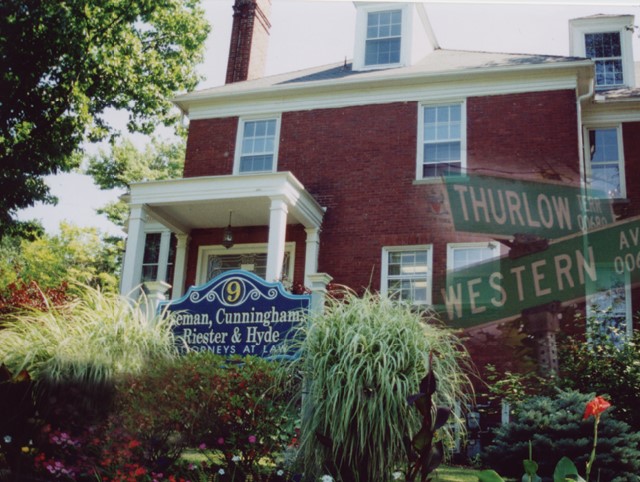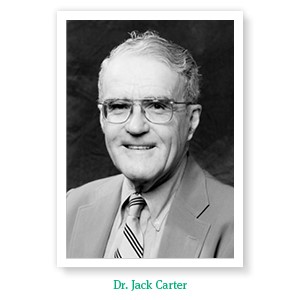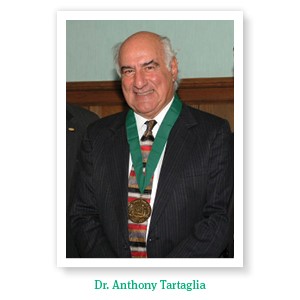CDPHP: From Humble Start-up to Health Care Leader

Did you know that CDPHP® was a small start-up business at one time? In 1984, our headquarters consisted of a modest office in the Pine Hills section of Albany where claims were processed by hand through a telephone equipped with a modem. Now, 32 years later, our internal operations are housed on four floors within the Patroon Creek office park, we operate multiple satellite service centers, we have developed cutting-edge technology to support our business, and we employ a workforce of more than 1,000. Quite the transformation!
Ultimately, our success is largely attributable to the vision, intellect, and tenacity of a few physician leaders – notably, the late Drs. Jack Carter and Anthony Tartaglia – who in 1977 convinced 300 of their physician colleagues from the Albany County Medical Society to ante up $100 each to conduct a feasibility study for establishing a physician-directed health plan. They were concerned that the rapid rise and popularity of the closed-staff model of health maintenance organizations (HMOs) like Community Health Plan (CHP) would limit patients’ choices in health care and take business away from physicians in private practice.
– notably, the late Drs. Jack Carter and Anthony Tartaglia – who in 1977 convinced 300 of their physician colleagues from the Albany County Medical Society to ante up $100 each to conduct a feasibility study for establishing a physician-directed health plan. They were concerned that the rapid rise and popularity of the closed-staff model of health maintenance organizations (HMOs) like Community Health Plan (CHP) would limit patients’ choices in health care and take business away from physicians in private practice.
When the study indicated that the proposal was viable, Carter and Tartaglia then went about gathering information from existing HMOs across the country, seeking legal advice, and raising the necessary seed money for the project from local  physician investors. The planning phase took seven years, but in 1984, a board of directors was named, officers were selected, and CDPHP was officially launched as an IPA model HMO. According to Tartaglia, “Jack Carter then made it his mission in life to make this organization successful, and he spent the next 20 years doing just that. He never wavered.”
physician investors. The planning phase took seven years, but in 1984, a board of directors was named, officers were selected, and CDPHP was officially launched as an IPA model HMO. According to Tartaglia, “Jack Carter then made it his mission in life to make this organization successful, and he spent the next 20 years doing just that. He never wavered.”
The rise of CDPHP to its current position as one of the top regional health plans was not without its fits and starts, however. For one thing, the original name chosen for the company was Physicians’ Health Plan, which promptly sparked a lawsuit by a plan of the same name in Ohio. The name was quickly changed to Capital District Physicians’ Health Plan, and the subvention holders – the physician investors who first supported the Plan – began to promote it to their patients, who probably figured that if the health plan was good enough for their doctors, it was good enough for them. Between 1984 and 1996, the number of subscribers rose from 5,000 to 41,000.
While that growth in enrollment was a positive sign, it also created some major difficulties. CDPHP had contracted with CoMed Management, a company from Columbus, Ohio, to provide the claims processing and customer service infrastructure for its operations. Within two years, though, CoMed was overwhelmed by the sheer volume of claims and enrollees. As a result, practitioners were not being paid in a timely fashion and subscribers were having difficulty accessing needed care. At roughly the same time, CDPHP outgrew its small office on Allen Street and moved to another location, but the phone system transfer lagged behind the physical move, so the needs and questions of patients and providers were not being resolved adequately. These inefficiencies prompted the New York State Department of Health to investigate and CDPHP to request a plan of correction from CoMed.
When it became clear to the board of directors that CoMed could no longer deal effectively with the volume of business, they solicited management proposals from other companies. All but one company insisted on part ownership of CDPHP, but the original physician investors were not about to cede control. Independent Health, headquartered in Buffalo, was ultimately chosen to manage the day-to-day operations of the fledgling health plan.
At that point, in 1987, CDPHP was gaining momentum in the industry, but the Plan still consisted only of its physician providers and its board of directors. All employees, back-office infrastructure, and even the office furniture and computers were under Independent Health’s control. The board had ultimate responsibility for “minding the store” and fulfilling their fiduciary duty of maintaining licensure, ensuring sufficient capital and reserve funding for operations, and overseeing the delivery of health care services.
This responsibility and imbalance of control weighed heavily on the board of directors, and in 1997, with 180,000 members in 11 counties in New York, they made the decision to transition to self-management. Ironically, CHP – the original threat and impetus for the creation of CDPHP – was eventually acquired by Kaiser Permanente, and in 1999, CDPHP acquired Kaiser Permanente. The Plan had come full circle.
Many aspects of CDPHP have changed since its humble beginnings as a small start-up. Over the 32 years since our founding, a host of challenges has tested our mettle, but we’ve emerged a stronger, mission-focused company, with more than 440,000 members in 24 counties. We owe our existence and our success to a small band of courageous physicians – risk takers with a vision and a strong culture of integrity and commitment to the community. Still guided by our physician partners, the words of Dr. Jack Carter and Dr. Anthony Tartaglia remain a guidepost for our operations: “Do the right thing, even if it’s the hard thing. And always remember why you’re in business – no matter what happens in the health care field, and no matter how difficult, there’s a patient at the end of the road who has to be taken care of. That’s your job.”
 The Daily Dose
The Daily Dose
 Adele O'Connell
Adele O'Connell
Dave Brown
In the early 70’s when CDPHP first started, I sold office supplies to the founders of your company. At the time you shared a secretary with another company at Thurlow Terrace. I’m 71 years old now and can’t remember who that other company was. I know the company was very successful but I can’t for the life of me remember their name…. I think they too moved out to the Washington Ave Ext area as did CDPHP before being bought out or merged with a Connecticut company. I had your business most of the time before you moved to Patroon.
Say hello to the founders for me and see if they might refresh my memory on who they shared the secretary with… I think there might have been three companies. I think I had to fight to get them credit for their first couple of desks. I laughed at my bosses when they asked me to go back and get 50% down.
Dave Brown
Formerly with Martin Office Products bought out by Spectrum Office Products in 86 and then bought by Staples in 95.
Still your customer…
Natalia Burkart
Hi, Dave – thank you for reaching out and for the walk down memory lane! We’re happy to have you as a CDPHP member.